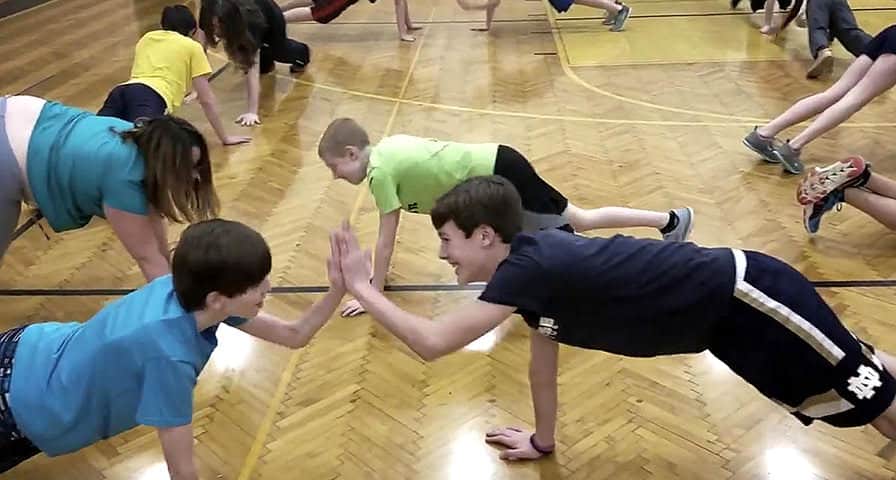By personalizing outcomes for each student, PE teachers have helped more students find positive experiences and the motivation to keep working to improve their overall fitness.
“You talk about differentiation in education,” said Portage Central Middle School PE teacher John Dunlop. “I have a boy who, in my 26 years of teaching and coaching, is as athletic a kid as I’ve ever come across. Then there’s another boy who’s about a foot-and-a-half shorter than him, doesn’t really enjoy PE, and they’re in the same class doing the same things. How do you meet the needs of both of these kids when you have them at the same time?”
Introducing Heart Rate Monitors That Measure Each Student’s Performance
When Dunlop’s students started wearing the IHT ZONE wrist heart rate monitors and looking at post-session summary reports generated by the IHT Spirit System, the teacher noticed a profound change in the student who didn’t enjoy coming to PE.
“I saw a complete change in his attitude, especially at the end of class when he’s downloading and looking at his data,” Dunlop said. “He said, ‘hey, I did pretty good today.’ I don’t know if that kid has ever experienced success in PE until this year.”
The post-session report immediately shows each student three key components of the just-completed session:
- how long he exercised,
- how much time he spent exercising in his target heart rate zones and
- if he met the daily goal for time spent exercising at a moderate-to-vigorous intensity level
By evaluating his performance on those metrics as opposed to whether he ran as far or as fast as classmates, he found a new outlook on PE and started to enjoy coming to class and working hard to improve his fitness.
“Those are the kids you worry about,” Dunlop said. “It’s the kids who this doesn’t come as easy for who need to experience success and get some feedback as to what they’re really doing.”
No More Going Through the Motions
Personalizing her program with heart rate monitors had a similar impact on a student in Misty Atnip’s PE program at Baldwin Creek Elementary.
“There’s one kid who’s quite a bit quite a bit overweight and he watches his monitor probably more than anyone else,” Atnip said.
Prior to wearing the ZONE monitor, the student simply tried to survive each PE class by staying in the shadows and “going through the motions.” When he realized the heart rate monitors allowed the teacher to evaluate him solely on his performance toward his goal, things changed.
“He can’t wait to check his [report] and see if he hit the goal,” Atnip said. “He almost always does and now he leaves the gym feeling good about himself.”
Seeing student outlooks change confirmed for Atnip that her program has improved with the addition of the IHT technology.
“I feel like I have differentiated my learning to reach them now because now they’re getting that immediate feedback,” she said.
Positive PE Experiences Lead to Healthier Adults
The feedback – and in particular positive feedback – helps create a powerful connection for students with their ability to self-manage their fitness. By helping them develop intrinsic skills that they can use away from the classroom, teachers are empowering a new generation of healthier adults.
“Adults hold remarkably vivid positive and negative memories of PE from their childhood, which may, to some extent, continue to influence their present-day attitudes, intentions and behavior,” wrote Matthew A. Ladwig, Spyridoula Vazou, and Panteleimon Ekkekakis in a 2018 study titled “’My Best Memory Is When I Was Done With It’: PE Memories Are Associated with Adult Sedentary Behavior.”
The study concluded that adults with negative memories of their PE time are less likely to exercise. That result fuels today’s teachers, motivating them even more to give every student a positive outlook on exercise and fitness.
“I want them to understand that this is important and something they should continue once they are out of school,” said Crestview School of Inquiry PE teacher Chris Amundson. He used the ZONEs to help a student improve her outlook towards PE.
“Now she’s going all out because she’s motivated and she can see how active she is and how her body is reacting to all of this exercise,” he said. “It becomes them learning that it’s great to push yourself to new limits.”
And those are skills that will follow them into adulthood.


